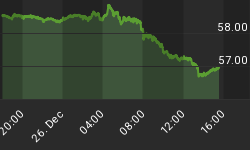In response to Why Would Anyone Buy a Spanish Bond?, reader RAID 3000 pointed out that the U.S. has far more serious problems than Europe (no argument there!) and included a link to LEAP2020, a European site doing great work on this subject. One of its articles contained the following chart:

This got me to wondering if it would be possible to construct a similar chart for China and its main trading partners. (The U.S. would dominate that one.) From there it occurred to me that China and Germany are in more or less the same boat due to their practice of vendor financing. They've gone about it differently but the effect has been the same. Consider:
China lends money directly to the U.S. by using the dollars it receives from us to buy Treasury paper. This lowers U.S. interest rates and supports the dollar, which allows us to continue to buy Chinese stuff.
Germany, on the other hand, has lent its credit rating to the whole Euro Zone, allowing countries like Greece and Spain to borrow more and at lower rates than they could have otherwise. The borrowers use some of this money to buy cars, pharmaceuticals, and solar panels from Germany.
Now both China and Germany have discovered that their surpluses were based in part on bad loans to weak borrowers, and that some of the assets they thought they owned are 1) not really theirs or 2) worth way less than face value.
China has a lot of dollars, but can't unload them without destroying the value of the dollars it retains. It's trying to move out slowly, scaling back its purchases of U.S. debt and buying gold and oil resources, but it has to walk a fine line because spooking the markets would defeat its purpose. So it's stuck with big dollar balances for the foreseeable future, while the U.S. is actively destroying the currency's value.
Germany doesn't own a lot of Spanish or Greek assets, but is now on the hook for what might end up being hundreds of billions of euros of PIIGS country debt. Which is to say it has to eat some of the loans it made during its vendor financing days.
Either way, those surpluses -- and the balance sheets built on them -- have turned out to be, in part, illusory.
















